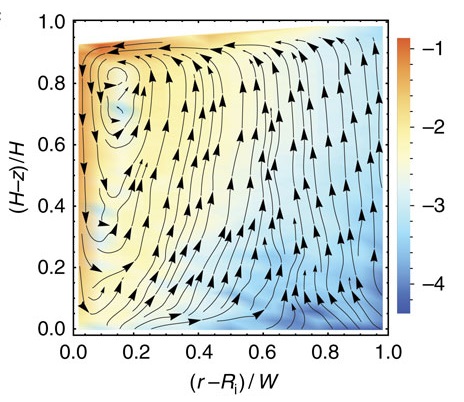Research > Granular Flows
Granular or particulate materials are the second most widely used materials in industry (after water). Examples range from fine grains such as cement and pharmaceutical powders to coarser grains such ores and food grains. Despite their vast and varied use, the handling and processing of granular materials has not changed significantly since the 19th Century.
Granular materials exhibit a variety of interesting mechanical behaviour. Owing to Coulomb friction between grains, they can withstand shear stresses and resist plastic deformation (as in heaps); when the stress state satisfies a yield criterion, they deform exhibit plastic deformation, but the details of their flow differs significantly from that of fluids. They can either flow as dense systems where grains are in abiding contact and friction is a dominant mechanism for transmission of stress, or as `loose’ granular gases stress is transmitted during near-instantaneous collisions. In all the regimes of flow, compressibility plays an important role in the mechanics.

Figure 1: A slowly rotating Taylor-Couette Cell filled with granular material exhibits a secondary flow in the vertical direction; a phenomenon that can't be explained by similar fluid systems Source
Our group focuses on building rheological models and understand kinematics of granular systems that can explain their phenomena such as the one showed in the figure above. We also aim to build in effects such as cohesion in such models

